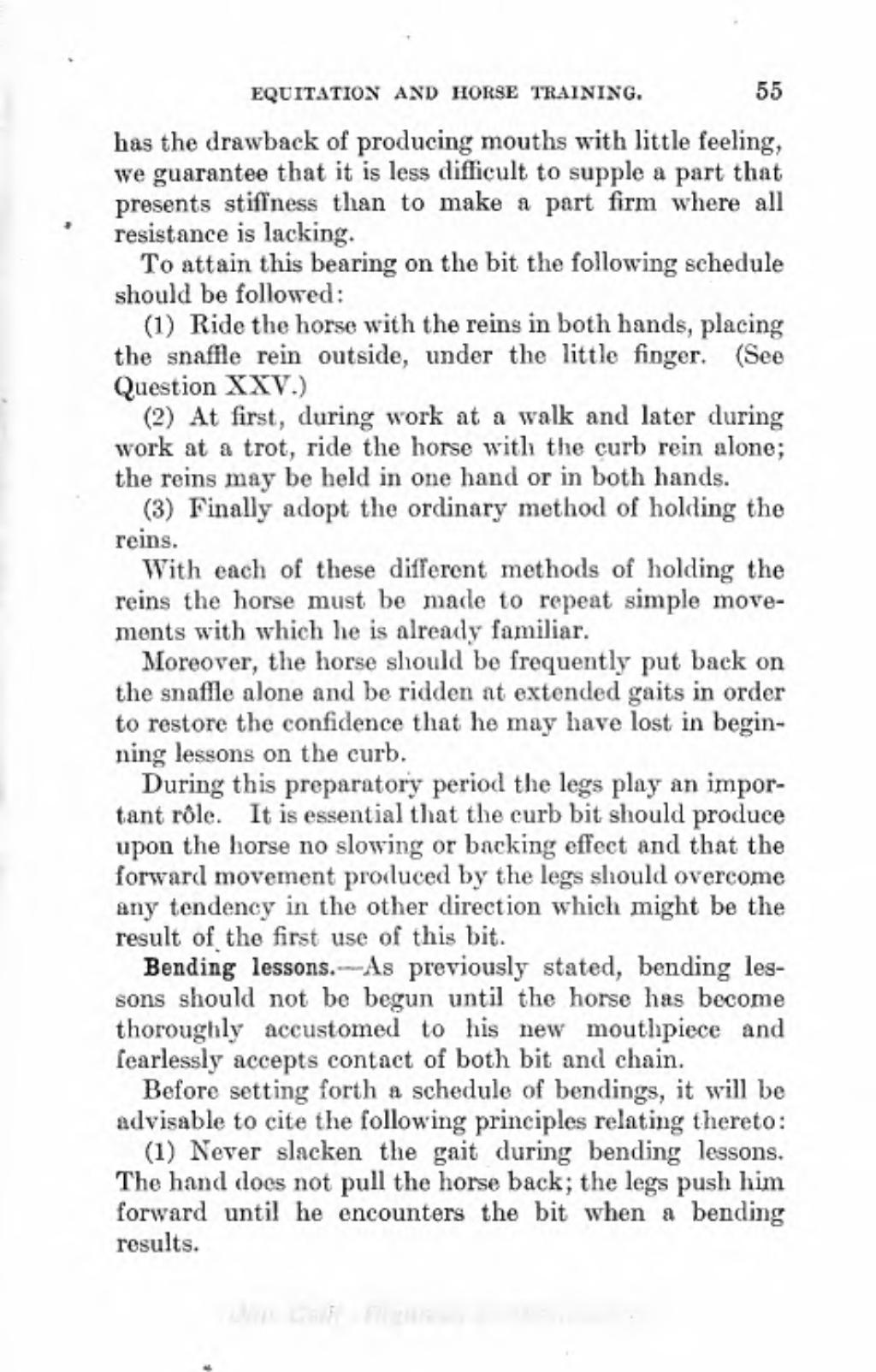has the drawback of producing mouths with little feeling, we guarantee that it is less difficult to supple a part that presents stiffness than to make a part firm where all resistance is lacking.
To attain this bearing on the bit the following schedule should be followed:
(1) Ride the horse with the reins in both hands, placing the snaffle rein outside, under the little finger. (See Question XXV.)
(2) At first, during work at a walk and later during work at a trot, ride the horse with the curb rein alone; the reins may be held in one hand or in both hands.
(3) Finally adopt the ordinary method of holding the reins.
With each of these different methods of holding the reins the horse must be made to repeat simple movements with which he is already familiar.
Moreover, the horse should be frequently put back on the snaffle alone and be ridden at extended gaits in order to restore the confidence that he may have lost in beginning lessons on the curb.
During this preparatory period the legs play an important role. It is essential that the curb bit should produce upon the horse no slowing or backing effect and that the forward movement produced by the legs should overcome any tendency in the other direction which might be the result of the first use of this bit.
Bending lessons.—As previously stated, bending lessons should not be begun until the horse has become thoroughly accustomed to his new mouthpiece and fearlessly accepts contact of both bit and chain.
Before setting forth a schedule of bendings, it will be advisable to cite the following principles relating thereto:
(1) Never slacken the gait during bending lessons. The hand does not pull the horse back; the legs push him forward until he encounters the bit when a bending results.
